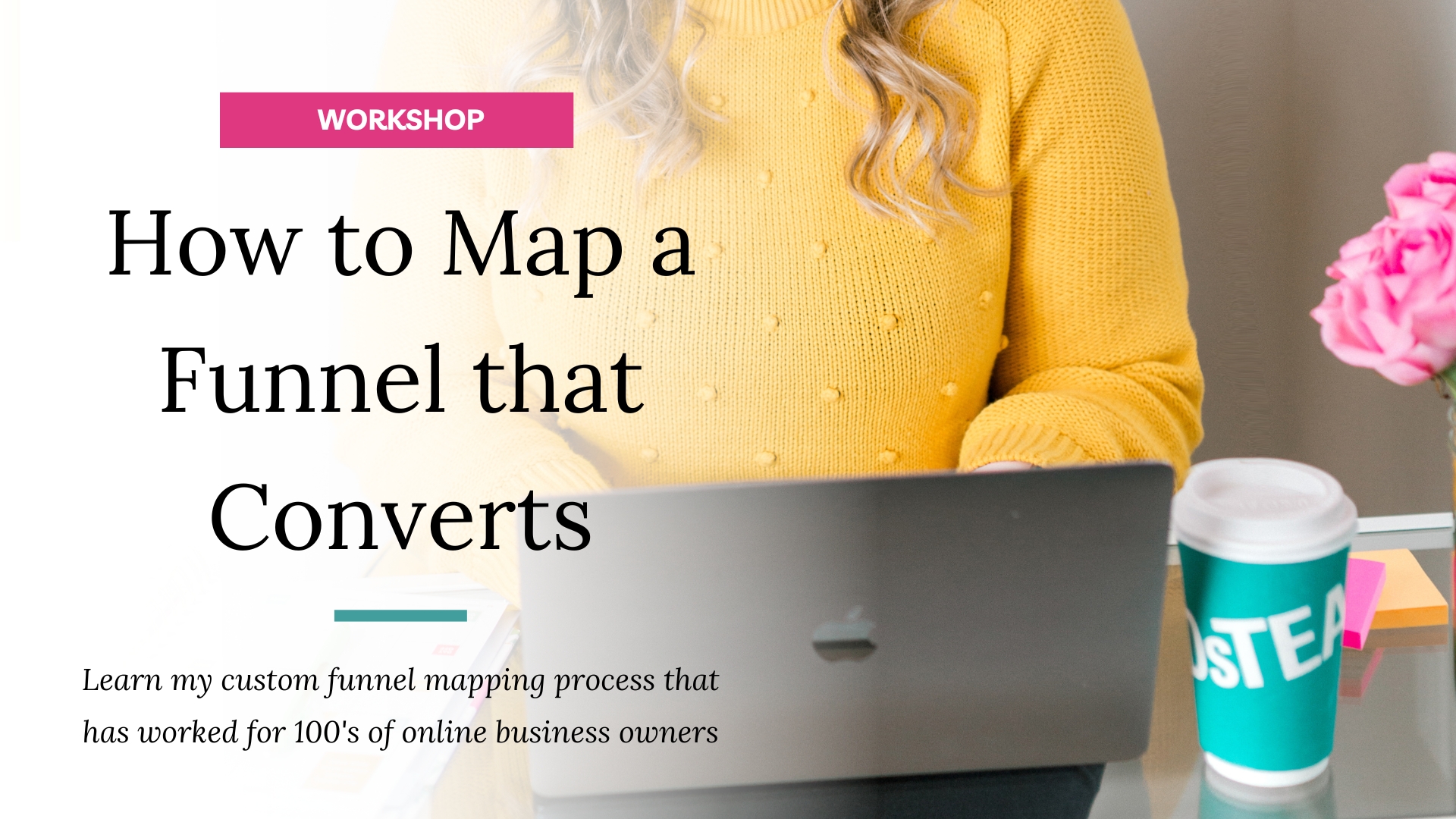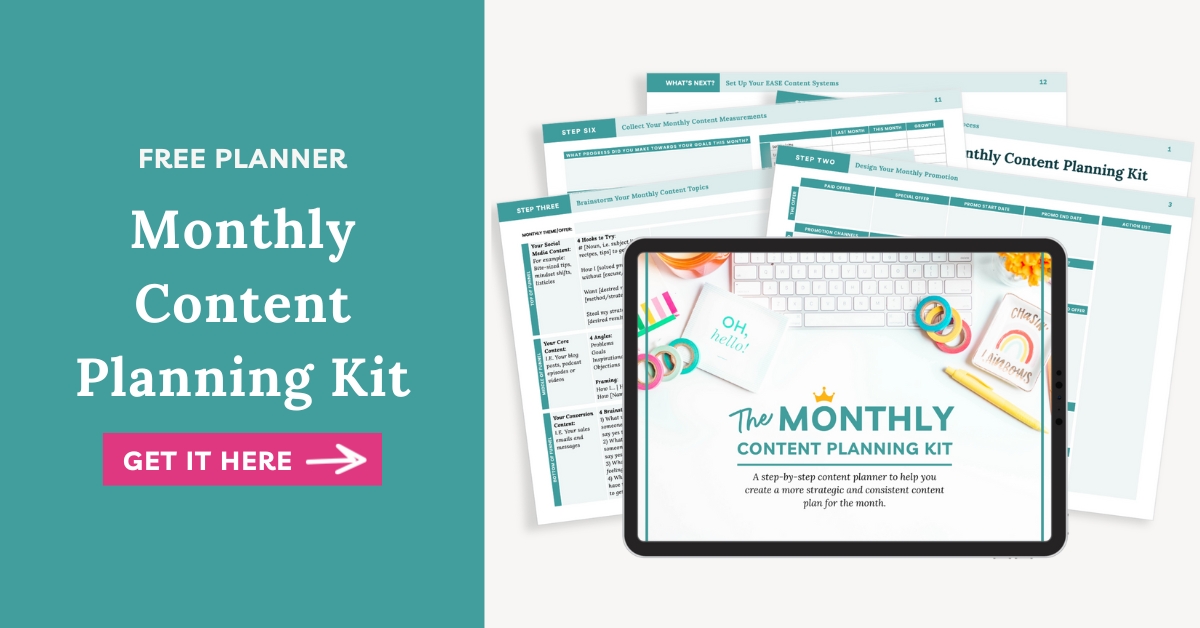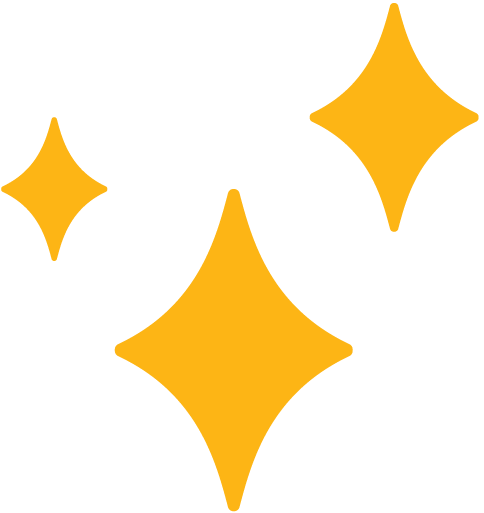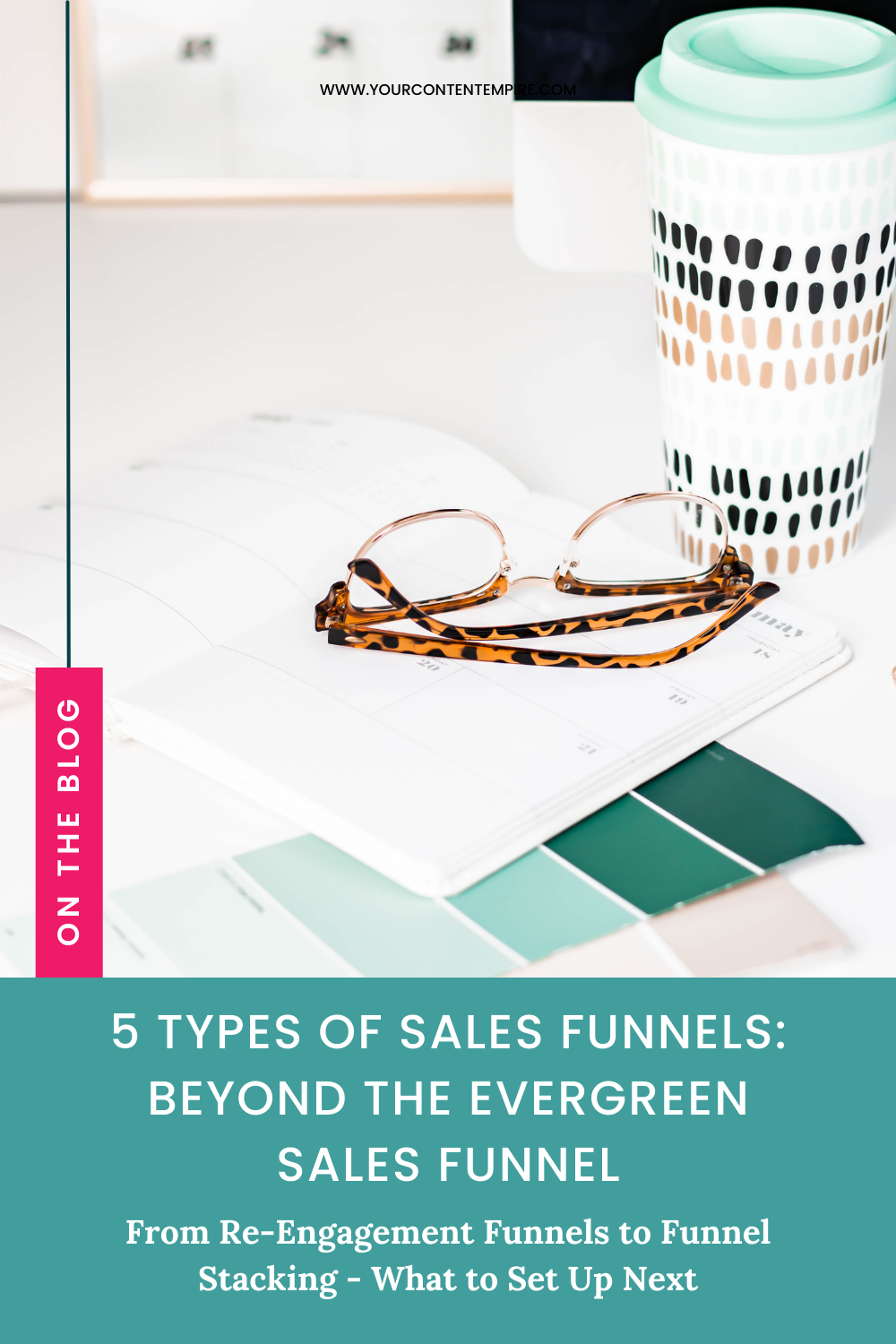Look at you. Evergreen sales funnel set up and it keeps rocking and rolling, bringing new clients and customers while you’re busy, off working on your all that other business stuff. But there are other types of sales funnels than just your sales funnels.
(P.S. No evergreen funnel yet? Check out this blog post, this freebie or this service and we’ll get you set up!)
So what’s next?
The nice thing is you don’t have to do these all at once. You can add them on slowly as you have time.
There’s way more you can do with funnels beyond the Evergreen welcome to signature offer funnel. Here are 5 of my favourites.
Types of Sales Funnels: Continuity Funnel
For your past clients and customers
You’ve helped them once, hopefully made an amazing impression that’s made them clients/customers for life. But we know life gets busy. So what you can you offer or get in touch with them about in a way that gets your continuity offers (perfect for previous clients) in front of them?
For example: If you’re a web designer and you’ve created a shiny new website for a client. You could send a monthly or quarterly checklist for website maintenance and while you’re at it, here are your ongoing web maintenance packages and graphic design packages – if they need further help. A consistent sequence that you can just automate and have running on a regular basis for you.
Another example: If you’re a coach who’s worked with clients for a set amount of time. How about reaching out quarterly or bi-annually with a re-tuning or goal setting package?
Types of Sales Funnels: The Next Offer (Offer Funnel)
For nurturing your existing email subscribers and moving them through a journey towards your next offer
Another funnel that’s often confused with your sales funnel is your offer funnel. What are your differing offer levels?
Entry level -> Mid Level -> High Level -> VIP Level
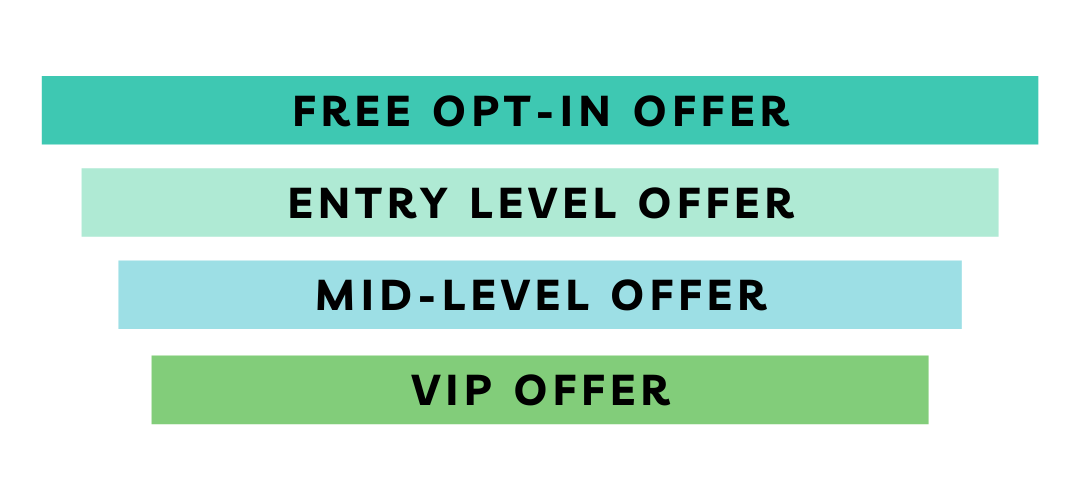
Another way to look at this is by picturing your customer’s journey. Where do they go after they’ve purchased your entry level offer (like an e-course or a single call), how do you get them from there to your next offer.
You could create another funnel only for those who’ve purchased a particular product that guides and nurtures them towards another offer.
For example: If you’re a copywriter, you get them through your evergreen funnel where they are invited to purchase your workbook that guides them through creating their brand language. The next funnel that triggers a few weeks after they’ve had a chance to use (and love) your infoproduct, you could start them in another funnel that invites them to a Brand Messaging Coaching Call or a custom copywriting package.
Types of Sales Funnels: Launch Funnel
For launching a program, course, new product during a specific time period
Planning out your launches gets a lot simpler if you think of them as condensed sales funnels. Beyond setting up your funnel (just as you’ve done for your evergreen funnel), most of your work will be on the traffic side of things and in ramping up your traffic to the top of your funnel.
So anytime you’re launching a program with a set cart-open and cart-close date, treat it like you’re building a new sales funnel.
Types of Sales Funnels: Forever Funnel
In place of your regular weekly newsletter
Another nurture funnel strategy is the forever funnel. Instead of sending a regular weekly email to your entire list each week, you instead add your regular newsletter to the end of an automated sequence. Everyone on your list is subscribed to this sequence, and they receive each email that’s in that sequence.

I call it your Forever Funnel because it runs automatically and is timeless (doesn’t matter what date they receive it, it’s still relevant to them).
This is one of the best tools to take your subscriber on a content journey and cultivate the relationship.
Good things about doing your email newsletter this way:
- Sends your emails on a consistent schedule without you having to do any of the management
- If you get swamped and don’t have time to come up with new content, you know that your email newsletter will keep running until you have time to come up with new content
- Takes care of the nurture phase of your savvy email strategy, so that you’re balancing the promo to value ratio and not overselling to your subscribers (so many people don’t make time for their email newsletters until they have something to sell… big no no)
- Leverages your old and new content
Wondering what to put in your Infinite Auto-Responder Sequence? For every blog post you create, you can create a new email to add to the end of your sequence. I like to provide a bit of context or background information about the blog post and include direct links to any content upgrades that go along with it. Or if you have a new freebie, you can add an email about it to your forever funnel.
Types of Sales Funnels: Re-Engagement Funnel
For reviving unengaged email subscribers
Sometimes people join your list, and after they’ve downloaded the freebie that got them there in the first place, they don’t open your emails or engage with your content.
That’s the perfect time to set up and send them a re-engagement sequence. Basically, a series of 2-3 emails that prompts them to re-engage.
You don’t need to explicitly state that you're going to take them off your list (although you can in a nice way), but you can send them a couple of emails with a gift and then remove them after awhile if they haven’t opened them.
The reasons I’ll do this? Well, it keeps my email list clean, gives me more accurate numbers for measuring my email marketing and it isn’t doing them or me any good if they’re sitting on an email list they don’t need.
I’ll do this every 6 months and then if there are people who haven’t opened anything in the past 6 months, add them to this sequence.
So What’ll It Be?
Which funnel will you set up next? Another evergreen or one of the 5 that I’ve outlined above?
Want to get started with mapping out a profitable sales funnel for free?
Sign up for my FREE funnel mapping workshop and get my exclusive funnel mapping template ↓
